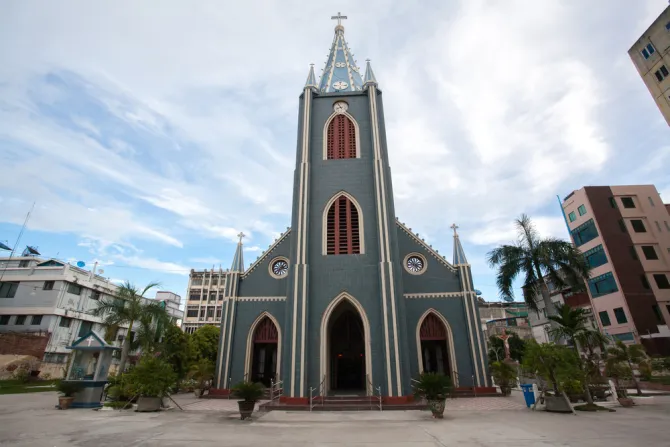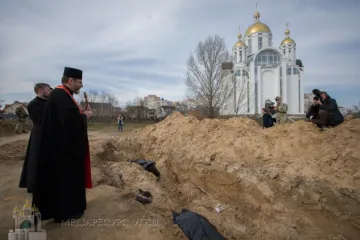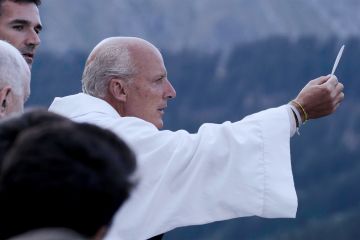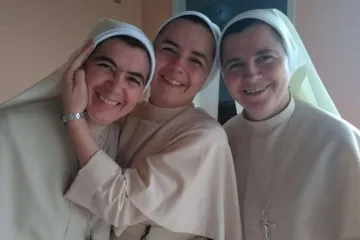Mandalay, Burma, Apr 8, 2022 / 13:45 pm
Approximately 40 Burmese soldiers forcibly took control of a Catholic cathedral in Mandalay prior to a Lenten prayer service on Friday and detained an archbishop and dozens of other worshippers, including a correspondent for CNA.
The soldiers entered Sacred Heart Cathedral at 2:30 p.m. local time April 8 and refused to allow worshipers to leave. Soldiers also occupied other buildings on the compound.
Archbishop Marco Tin Win and employees of the Archdiocese of Mandalay were similarly herded into the building and forced to sit in the pews along with the worshipers.
A correspondent for CNA was present and was detained for about three hours, then allowed to leave. The others detained were released several hours later.
“I was so afraid,” one elderly Sacred Heart Cathedral parishioner, who did not give her name for safety reasons, told CNA. “The military was always crazy but they never acted like this before. We ran home as soon as we were allowed out of the church.”
“The soldiers kept demanding to know where the gold and money and weapons were hidden,” explained her nephew, who also asked for anonymity. “I told them there was none. Any money collected is for the relief of poor families.”
As soon as the soldiers entered the cathedral, alerts were sent out to the entire Catholic community to stay away from the compound.
Upon hearing of the intrusion, Monsignor Dominic Jyo Du, vicar general of the archdiocese, confronted the soldiers and their officers inquiring as to their presence. The soldiers rushed him into the cathedral along with the archbishop.
About 30 of the soldiers moved away pews to make room for themselves and slept in the cathedral overnight. They were still inside the cathedral early Saturday morning.
News of the armed occupation of the cathedral has not been reported by state-controlled media.
Renewed persecution
Sacred Heart Cathedral is located in a working class, largely Tamil Indian neighborhood that has not seen significant open resistance to the military coup that took power on Feb. 1, 2021, dissolving the Parliament and arresting those connected to the legitimate government.
The neighborhood’s populace prefers instead to plan their demonstrations and attacks far from their homes. This has not stopped the military from routinely invading suspected leaders’ homes and harassing ethnic non-Burmans.
Tamils are either Catholics or Muslim and are held in suspicion by the military and militant Buddhists, including several high profile radical monks such as Ashin Wirathu, whose fiery sermons concentrate on racist diatribes against Muslims and Christians. On multiple occasions Wirathu openly has called for the extermination of the Muslim minority, known as the Rohingya. The latter, who have had to across the border to Bangladesh, have had open conflict with the central government for at least 10 years.
A minority of the nation’s Buddhist clergy, perhaps 10%, openly supports the military and its attacks against ethnic and religious minorities.
(Story continues below)
Since the coup, more than 12,000 people have been arrested and an estimated 1,600 killed in the conflict, including 50 children. According to media reports, the military junta has deliberately targeted churches, other institutions, and civilians. In March military aircraft attacked a town in the east of the country, causing severe damage to a Catholic convent’s roof, ceiling, and windows.
Archbishop of Mandalay Bishop Mark Tin Win join protest #rejectmilitarycoupmyanmar #WhatHappeningInMyanmar photo TRS pic.twitter.com/Ya5Z3mQsyx
— HarryMyoLin (@harry_myo) February 8, 2021
The junta's crackdown follows a pattern of more than a century of the military attacking Catholics and other religious and ethnic minorities throughout Burma, burning down churches, imprisoning those who are labeled as dissenters, and restricting the movements and activities of Catholics throughout the country in general.
There has been a great deal of animosity between the Catholic community and militant Buddhists ever since the end of the British Raj in 1945. Two of Burma’s first native saints were both martyred by radically xenophobic Buddhist monks, a cultural abberration since most of the country’s monks hold Catholics and priests and religious in high regard due to their charity work.
Pope Francis visited Burma, also known as Myanmar, in November 2015. Since the coup he has repeatedly called for peaceful dialogue and end to persecution in the country.






